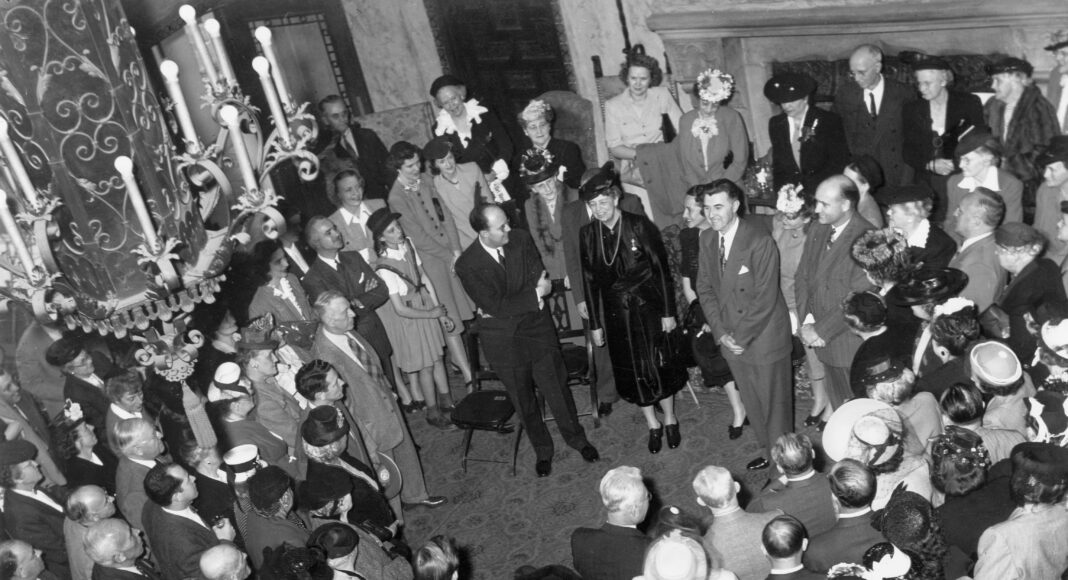The secret Dead Sea Scroll of Hotel De Anza history has resurfaced.
I do not have room for the entire 5,000-word document John Lindblom wrote in 1990 when the Hotel De Anza reopened, but revisiting his old text feels like a major archaeological discovery.
Hotel De Anza, its story, the people who’ve stayed there, everything about how it was built, its mid-century glamorous heyday, its decline into a crumbling flophouse, and then all that was done to resurrect the property in 1990—everything, all of it combined together—should be required reading. It is perhaps the most “San Jose” hotel story in the history of the world. And Lindblom got all the goods.
Lindblom was a legendary Mercury-News reporter, but in this case, he was hired by PRx, an equally legendary marketing and communications firm, to pen a colorful history of the hotel when it was finally restored. The remarkable document chronicles the entire rise and fall of the De Anza, and then its return to glory.
In the story, Lindblom quotes construction mogul Barry Swenson at length because Swenson’s grandfather is the one who built the De Anza. He also quotes former employees who worked at the hotel in the ’30s or ’40s, but who were still alive when Lindblom wrote the story in 1990.
For instance, the lurid bits supplied by a former elevator operator named Edward Bruce are pure gold. Bruce recalled many celebrities. He even met former First Lady Eleanor Roosevelt in the elevator during her 1947 visit. Thanks to the late San Jose photographer Shirlie Montgomery, whose collection resides at History San Jose, we have imagery from that very day.
But back to the elevator. This blockbuster graph came next: “Bruce nearly lost his job when a young and mischievous Mickey Rooney confiscated that same elevator in an attempt to ‘make time’ with a load of squealing schoolgirls. ‘He just kept jamming those girls in there, so naturally it got stuck between the first and second floors.’”
There were plenty of musicians too. Cab Calloway, for example, was the hotel’s first Black guest, since Black people previously weren’t allowed.
Lindblom then relays a tale from a former bellhop named Stan Jarvis, whose tenure was from 1933 to 1938: Jarvis recalled a celebration for the naming of Brooke Hart as a vice president for L. Hart Company was scheduled at the hotel on the night Hart was kidnapped (November 9, 1933).
Heavyweight fighters were also regulars, including the renowned heavyweight champion Jack Dempsey and his manager Jack Kearns, who visited on more than one occasion. Same with Max Baer and his brother, Buddy, another heavy, both of whom bought rounds for the house whenever they showed up.
“You never called those two by their names, it was always ‘Champ,’” Jarvis said.
Of course, before the Mercury-News bailed from downtown in the late ’60s, the paper’s offices were located right across the street from the Hotel De Anza. Lindblom’s history rightly includes war stories from the hotel’s El Capitan bar, which rightly served as the unofficial press club for the Merc’s editorial staff: “If the city editor was looking for one of his assistants, he’d start yelling, then send the copy boy over to the bar. Usually, he’d find the assistant there. That bar was always full of people.”
I guess those were the days before alternative weekly newspapers and happy hours at roach-infested rock clubs down the block. Fortunately or unfortunately.
Lindblom’s history is important because, right now, it is very depressing to walk inside the De Anza, currently operating as a Destination by Hyatt. The killer La Pastaia Restaurant is long gone and the Hedley Club isn’t remotely what it used to be.
Now, I am not unfamiliar with the hotel and hospitality industry. I know how these things work. I get it. But if this property degenerates into one more boring chain hotel for business travelers, it will be a major loss.
I don’t think that will necessarily happen, though. With the right ownership group and the right management, the De Anza will someday return to glory. And if I can help it, all of Lindblom’s 5,000 words will see the light of day. The ghosts of Eleanor Roosevelt, Mickey Rooney and Max Baer demand it.



